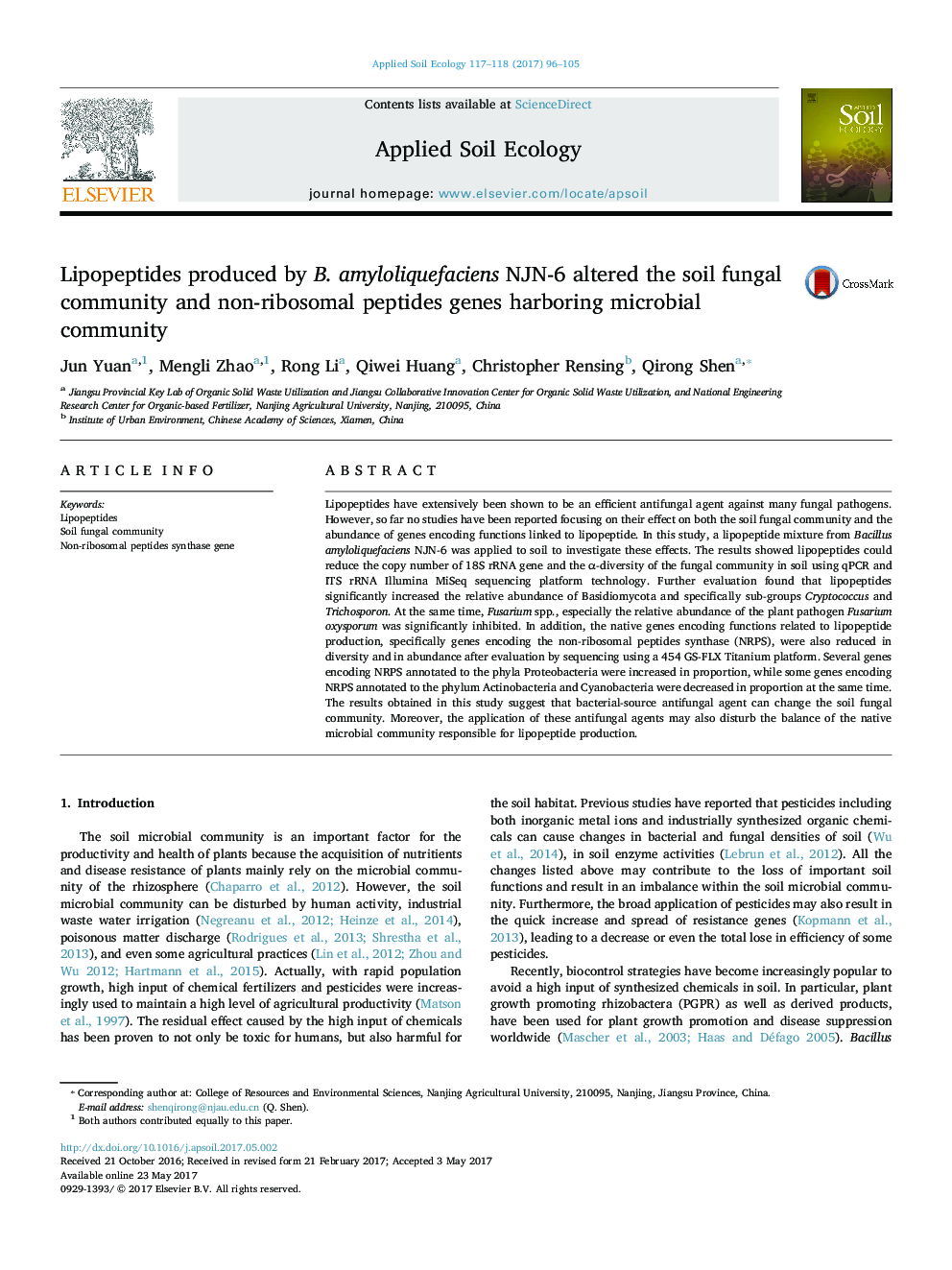| Article ID | Journal | Published Year | Pages | File Type |
|---|---|---|---|---|
| 5742667 | Applied Soil Ecology | 2017 | 10 Pages |
â¢Soil microbial source fungicide-lipopeptides can impact soil fungal community.â¢Non-ribosomal peptide synthetase (NRPS) gene has a feedback regulation mechanism like the nifH gene.â¢Basidiomycota was increased and Fusarium oxysporum was decreased after application of lipopeptides.
Lipopeptides have extensively been shown to be an efficient antifungal agent against many fungal pathogens. However, so far no studies have been reported focusing on their effect on both the soil fungal community and the abundance of genes encoding functions linked to lipopeptide. In this study, a lipopeptide mixture from Bacillus amyloliquefaciens NJN-6 was applied to soil to investigate these effects. The results showed lipopeptides could reduce the copy number of 18S rRNA gene and the α-diversity of the fungal community in soil using qPCR and ITS rRNA Illumina MiSeq sequencing platform technology. Further evaluation found that lipopeptides significantly increased the relative abundance of Basidiomycota and specifically sub-groups Cryptococcus and Trichosporon. At the same time, Fusarium spp., especially the relative abundance of the plant pathogen Fusarium oxysporum was significantly inhibited. In addition, the native genes encoding functions related to lipopeptide production, specifically genes encoding the non-ribosomal peptides synthase (NRPS), were also reduced in diversity and in abundance after evaluation by sequencing using a 454 GS-FLX Titanium platform. Several genes encoding NRPS annotated to the phyla Proteobacteria were increased in proportion, while some genes encoding NRPS annotated to the phylum Actinobacteria and Cyanobacteria were decreased in proportion at the same time. The results obtained in this study suggest that bacterial-source antifungal agent can change the soil fungal community. Moreover, the application of these antifungal agents may also disturb the balance of the native microbial community responsible for lipopeptide production.
Graphical abstractDownload high-res image (101KB)Download full-size image
